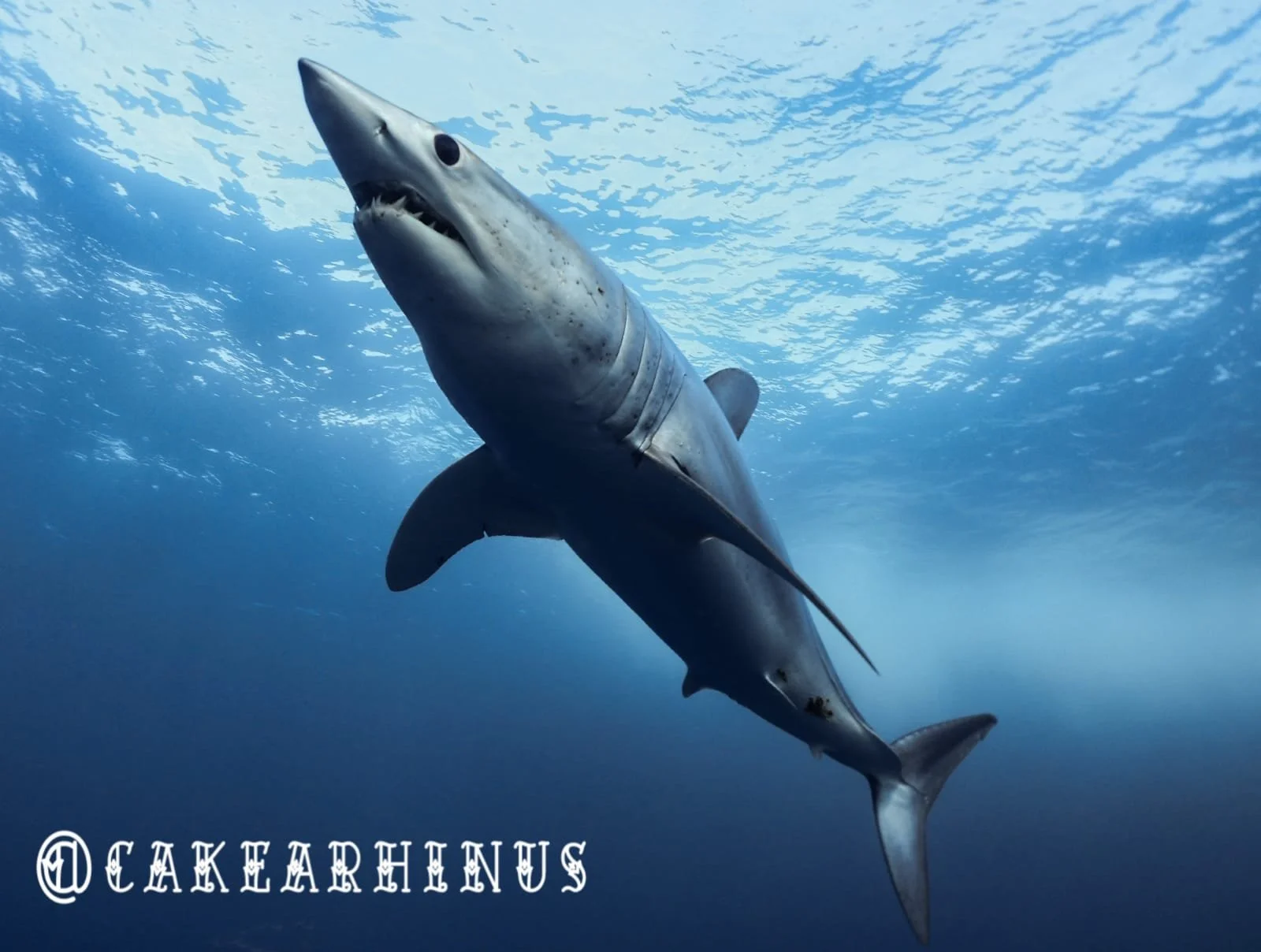Mako sharks: Compressed into Capture
The Shortfin Mako Shark (Isurus oxyrinchus) is the fastest shark in the sea, but it’s still not fast enough to escape the rate at which we’re catching them. This isn’t news to us and is a well-recognised problem, so why is it seemingly getting worse?
Since 1970, there has been a 71% reduction in the abundance of oceanic
elasmobranchs (sharks, skates and rays), as a result of an 18-fold increase in fishing effort. Mako sharks are no exception to these anthropogenic pressures and are listed as endangered on the IUCN red list of endangered species. Their highly mobile nature and long reproductive cycles make them particularly difficult to conserve. This means the chances of older females becoming the victims of fishing or bycatch before they can reproduce is concerningly high.
Image by Ryan Cake (@cakearhinus)
Aside from the aforementioned difficulties that come with conserving most large marine vertebrates, makos present a unique predicament: They don’t fit into one category. Shortfin makos swim the line between desired target species, and potential unwanted bycatch, meaning they are caught on purpose, and when they are not wanted, they are caught anyway! Some rest-bite would be nice right?! Pun intended (sorry not sorry). Unfortunately, there doesn’t appear to be a huge amount of that left. Makos have been recorded to use deeper waters for hunting and refuge from human activities, but safety in depth is becoming increasingly difficult to utilise due to reduced oxygen availability.
Oxygen minimum zones (OMZs) are exactly what they sound like, areas of the ocean that has a low oxygen content (1.5-3.5 ml O 2 l -1 ). Such concentrations are known to impact pelagic fish physiology and behaviour and are stretching further above the core OMZ into pelagic regions, where makos are frequent. Permanent OMZs exist in all ocean basins, but as a result of global climate change, the Eastern Tropical Atlantic OMZ (situated near the Caribbean) is expanding, and at a particularly fast rate. This OMZ sits between approximately 200m and 1500m deep, well within the diving range of mako sharks.
Given that mako sharks have one of the highest resting metabolic rates and maximum metabolic rates within the elasmobranch family, it is expected that increasing temperature and reduced oxygen saturation in the ocean may have more intense negative impacts on mako sharks than other species. With OMZs expanding due to climate change, mako sharks are experiencing a decline in viable deepwater regions in which they can hunt and effectively ‘hide’. As a result, individuals are being forced into shallower waters and subsequently at a higher risk of being exposed to fishing and bycatch from pelagic longlines. Despite mako sharks facing an assault on their population from above and below, there is currently no species recovery action plan in place at a national or international level.
According to recent research and ICCAT (International Commission for the Conservation of Atlantic Tunas) data, both OMZs and mako catch rates are still on the rise. Efforts are needed to minimise the impact on mako sharks in particular before it is too late. Is there any hope? YES, but we need to be snappy about it. Conducting more research into understanding where OMZs are growing and where these zones currently overlap with commercial fishing is critical. This understanding could inform policy and the creation of no-take zones (NTZs), which would give mako sharks a better chance of surviving longer and having offspring.
Image by Ryan Cake (@cakearhinus)
Hopefully, a better understanding, coupled with (much) more effective protection will allow our oceans and the mako sharks within, the breathing space they need to start reversing the impacts of fishing malpractice and climate change.


